Below, you can get some of the drawings I used to make these modifications.
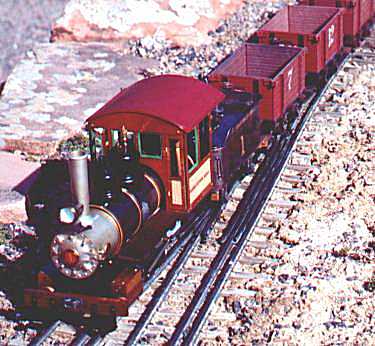

| This is my first Ruby modification. It's based on
the Class 6-C engine shown at the top of the previous page. I
have added a boiler jacket and new boiler bands, steam dome
appliances, headlight, builder's plates and a new number plate to
the boiler. Norm Saley turned the stack base. I added a
firebox to the rear of the boiler, then raised the floor to the
level of the running boards and built a wooden
cab. The tender is scratchbuilt from brass, with a
wooden frame and decking. After this photo was taken, I
fabricated a pilot truck and added a wood
"cowcatcher"
pilot, feedwater pipes, etc. The gold lettering on the
cab and tender were done on an Alps printer. She's FH&PB
locomotive No. 1, named Miss Ruth Hill.
Below, you can get some of the drawings I used to make these modifications. |
 |
| Here's a CAD drawing of a new cab for Ruby, suitable for
use with a tender. It's based on the Class 6-C 2-4-0 tender
engine shown on the previous page, with some influence from an Alco
2-4-0 (plans by Ed Gebhardt in the Gazette5). The cab is built to sit on a footplate raised to the same level as the running boards, with a 2-inch diameter boiler jacket. The jacket can be made using .005 sheet metal (steel or brass), and internal boiler bands made from .250" x .0625" brass strips, annealed and rolled to fit snugly around the boiler body. Shim brass (.005") can be cut with scissors or metal shears and bends easily around the boiler. Construction can be metal, wood, or wood over metal. This cab also requires some serious fabrication of running boards, rear cab support beam, etc. |
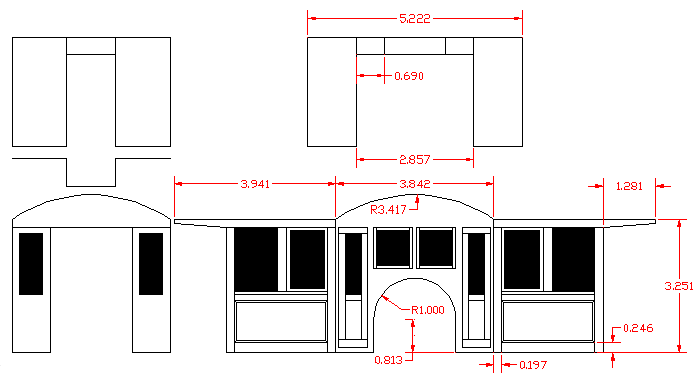 |
| And here's the tender for the same engine. Note the elaborate journal pedestals. They appear to be unique to the Baldwin 4-wheel tenders. I used Hartford Products pedestals until I find the correct castings. (Click on the image at right to retrieve a DXF file with the sheet layouts. Or download the GIF -- displayed at half size on the right -- and print.) |  |
| Here are the measurements for the boiler jacket I used on FH&PB No. 1. A 1/16" layer of insulation or spacers is assumed. Ordinary wool felt works well as insulation and is readily available. I have a slip roll, so my jacket is made from .020" sheet, then formed into a cylinder. You could also make it from brass or steel shim stock. You may need to fabricate new boiler bands, too, if the screws on the provided bands won't accomodate the larger diameter. (Click on the image at left to retrieve a DXF file with the sheet layouts. Or download the GIF -- displayed at half size on the left -- and print.) |
| This is a CAD drawing of a Porter saddle tank, based on the Lehmann Porter and a couple of plans in the Narrow Gauge and Short Line Gazette3. There were plans for an 8-ton Porter which is very close in size to the Ruby in Outdoor Railroader4 magazine. Porter's 0-4-0STs came in different sizes, so while this drawing is a bit small for Ruby, it will give you an idea of how simple making such an add-on tank will be. Five pieces of brass, a little soldering, and voilá! (Click on the image to retrieve the DXF file. Or download the GIF image -- displayed here at half size -- and print.) |  |
| The file at right shows another Ruby fan's take on the possibilities. Click on the thumbnail to see the file full-size. (Thanks to C. Cleat for sending the drawings.) | 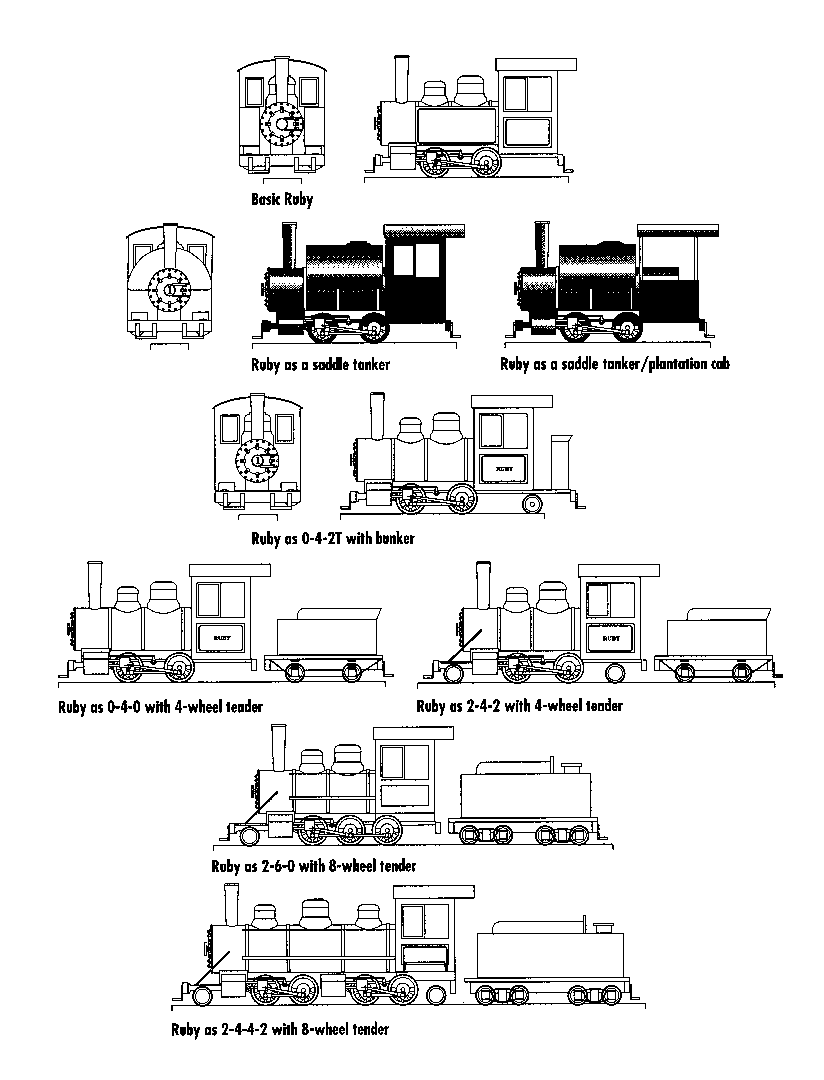 |
 |
Jon Bloom is another of the many Forney fans who has transformed the Ruby into this charming type. (Click on photo to view at full size.) |
| John Thomson added pilot and trailing wheels to create a 2-4-2 "Columbia" type. (Click on photo to view at full size.) |
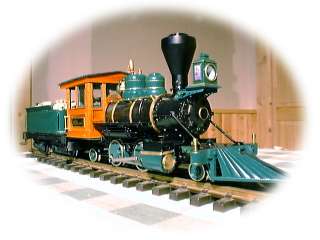 |
Kevin Strong is doing his usual top-drawer job bashing this Ruby into a model of the Lahaina, Kaanapali & Pacific Railroad's 2-4-2. He's using many cool techniques that should inspire and encourage us all. Look at the extensive web page he's put together on his Ruby modifications. There are lots of great tips and techniques there. (Click on photo to view at full size.) |
| Lou Banning's lumber mill 0-4-2 is looking sharp with a new pilot, cab and paint job. (Click on photo to view at full size.) |
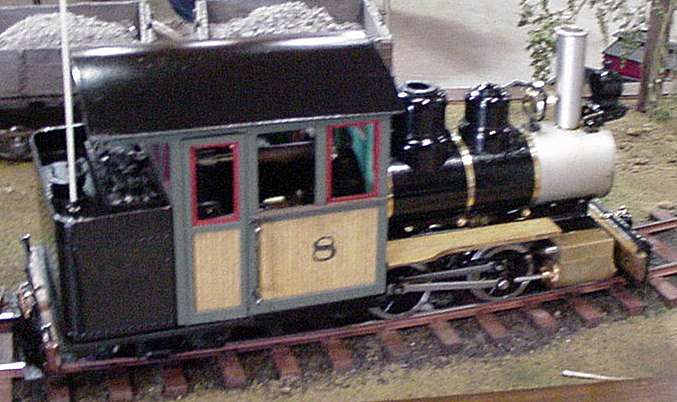 |
Clem Ojevich's stylish realization of the FH&PB Forney kit. |
| David Fletcher's Nefertiti is a gorgeous conversion using a Bronson-Tate cab, Cedarleaf decals and a huge amount of creativity. (Click on photo to view at full size.) |  |
 |
These are just a couple of
the fleet of Ruby-based locos by the prodigiously prolific
Norm Saley. Photographed at the 2010 International
Small-Scale Steamup. (Click on photo to view at full size.) |
| Jim Schulz used a Ruby as the basis for this Chicago elevated railway loco. Nice work! (Click on photo to view at full size.) |  |
Last updated 02 November, 2021
Copyright © 1999-2021 by: Vance
R. Bass. All rights reserved. Photos on this page are the
property of their creators. Please use any and all
information contained herein for your hobby enjoyment. If you're
going to make money from it, talk to me first.